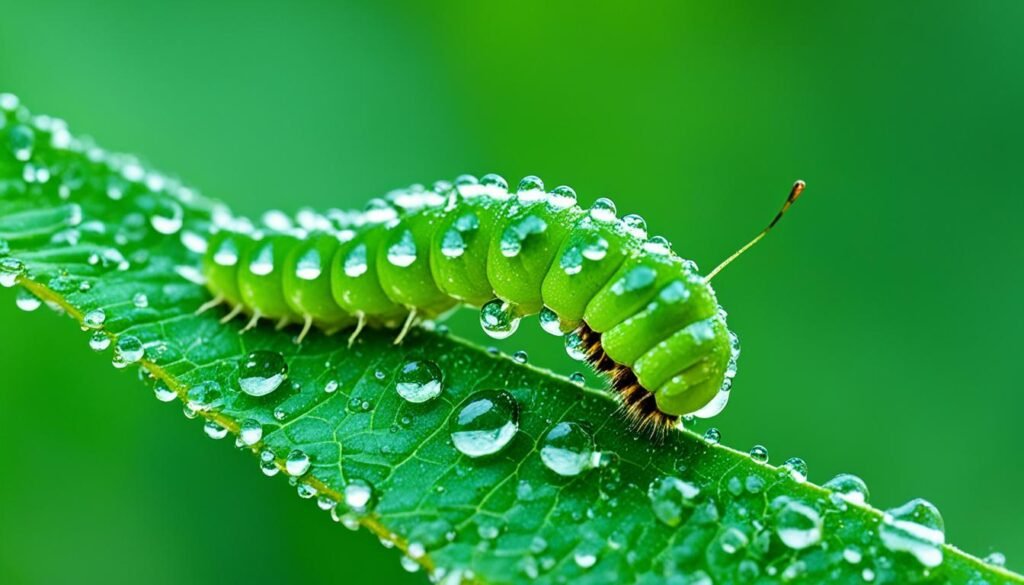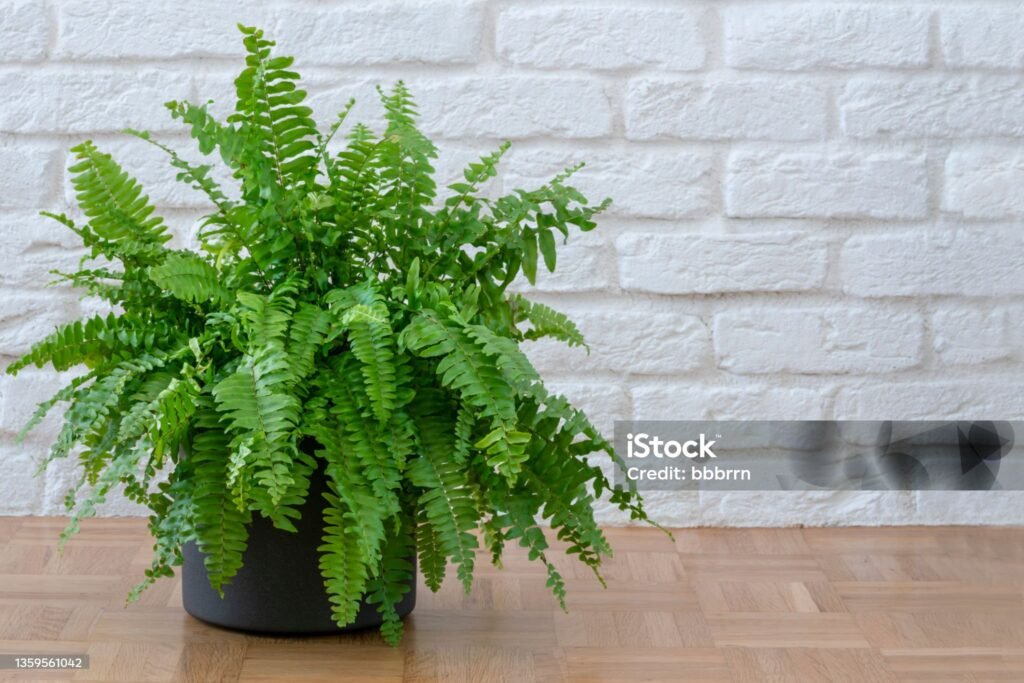
Indoor plants do more than just beautify your living space; they are essential for improving the air quality in your home. Certain indoor plants have the unique ability to filter out harmful toxins and release fresh oxygen, creating a healthier environment. In this article, we’ll explore the top 10 indoor plants that excel in air purification and how you can care for these beneficial indoor plants.
Table of Contents
1. Spider Plant (Chlorophytum comosum)
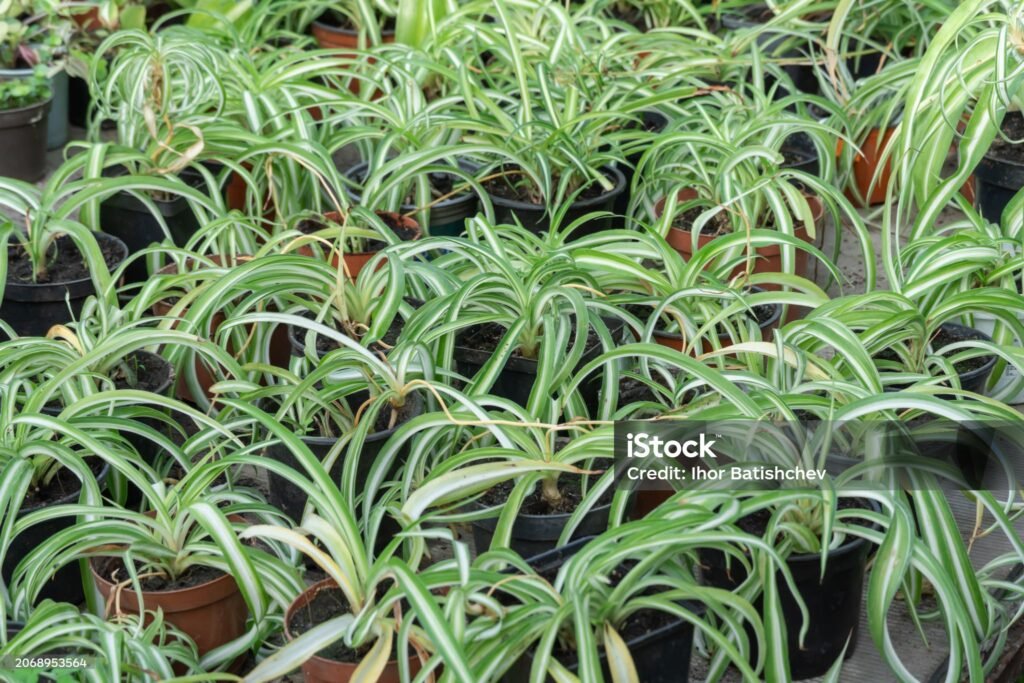
The Spider Plant is a popular choice among indoor plants for air purification due to its resilience and effectiveness. This hardy indoor plant is known for its ability to remove toxins such as formaldehyde and xylene from the air, making it an ideal addition to any home.
Why Spider Plant is a Great Air Purifier
Spider Plants are particularly effective indoor plants in filtering out toxins like formaldehyde, which is commonly found in household items such as furniture and cleaning products. Their long, arching leaves and ability to produce numerous “babies” make them a great option for enhancing air quality. Additionally, their robust nature means they thrive even in low-light conditions, making them suitable indoor plants for various environments.
How to Care for a Spider Plant Indoors
Spider Plants are easy indoor plants to care for, making them a favorite among beginners. They thrive in indirect sunlight and require moderate watering, allowing the soil to dry slightly between waterings. Overwatering can lead to root rot, so it’s essential to keep the soil well-drained. Spider Plants also benefit from occasional misting to maintain humidity, especially in dry indoor environments.
Common Issues and How to Solve Them
Although Spider Plants are generally hardy indoor plants, they can occasionally suffer from browning leaf tips, often caused by overwatering, low humidity, or fluoride in the water. To prevent this, use distilled or rainwater for watering and maintain a consistent watering schedule. If the plant begins to look leggy, consider trimming back the leaves to encourage new growth in these indoor plants.
2. Snake Plant (Sansevieria trifasciata)
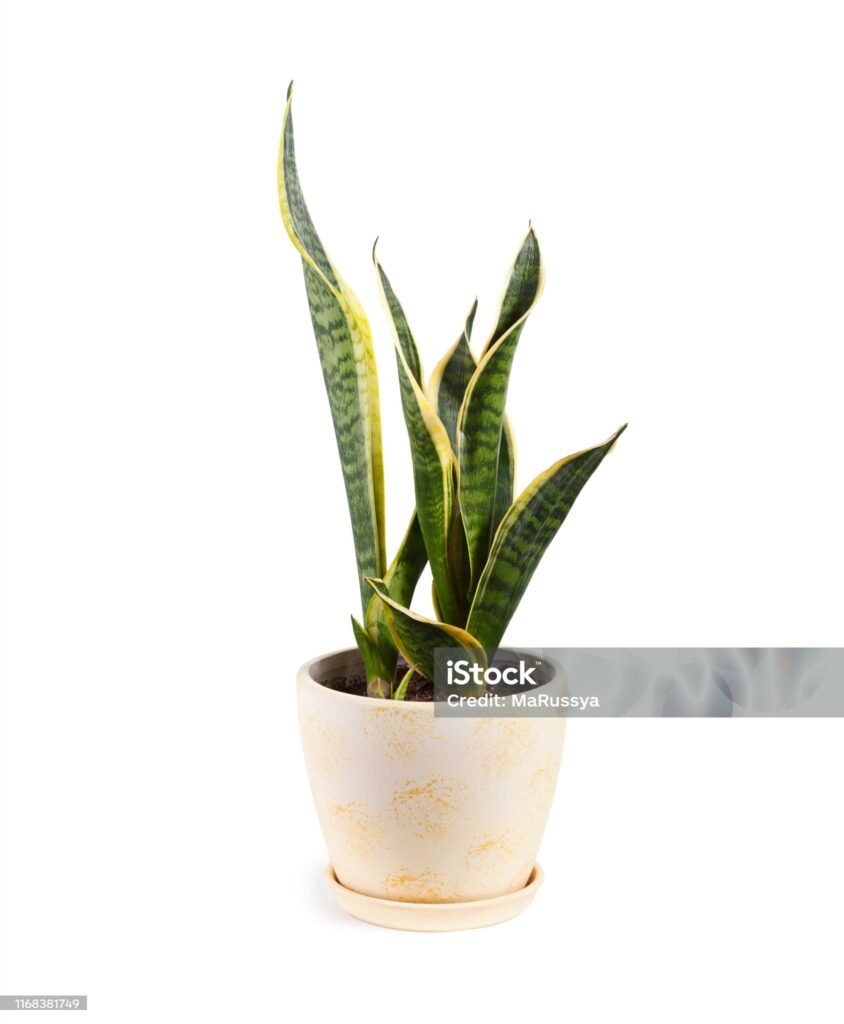
The Snake Plant, also known as Mother-in-Law’s Tongue, is a striking and low-maintenance indoor plant that’s excellent for improving indoor air quality. Its tall, upright leaves are not only visually appealing but also highly effective in filtering out toxins like benzene, formaldehyde, and trichloroethylene, making it one of the most versatile indoor plants.
Air-Purifying Qualities of the Snake Plant
The Snake Plant is known for its unique ability to perform photosynthesis at night, making it an ideal indoor plant for the bedroom. It converts carbon dioxide into oxygen while you sleep, helping to improve air quality and promote better rest. Its ability to remove common indoor pollutants makes it a versatile indoor plant for any room in your home.
Placement Tips for Optimal Air Purification
To maximize the air-purifying benefits of your Snake Plant, place it in areas where air circulation is limited, such as bedrooms, offices, or small living spaces. It thrives in indirect light but can tolerate low light conditions, making it a versatile choice for different parts of your home. Keep it in well-drained soil to avoid root rot, and water it sparingly, as with other drought-tolerant indoor plants.
Watering and Light Requirements
The Snake Plant is a drought-tolerant indoor plant that requires minimal watering. Watering once every 2-4 weeks is sufficient, especially in the winter months when the plant’s growth slows. It can handle various lighting conditions, from bright indirect light to low light, though it will grow faster in brighter environments. Avoid overwatering, as this is the most common cause of problems with this indoor plant.
3. Peace Lily (Spathiphyllum)

The Peace Lily is a beautiful and elegant indoor plant that not only adds a touch of serenity to your home but also helps purify the air. Known for its ability to remove pollutants such as ammonia, benzene, and formaldehyde, the Peace Lily is a top choice among indoor plants for those looking to improve air quality.
Peace Lily’s Effectiveness in Removing Toxins
Peace Lilies are among the most efficient indoor plants for removing a wide range of airborne toxins. They absorb pollutants through their leaves and break them down, releasing clean oxygen in return. Their ability to thrive in low-light conditions while purifying the air makes them perfect indoor plants for bedrooms, bathrooms, and other low-light areas of the home.
Best Practices for Caring for a Peace Lily
Caring for a Peace Lily involves providing it with the right balance of light, water, and humidity. These indoor plants prefer indirect light and should be kept away from direct sunlight, which can scorch their leaves. Water them when the top inch of soil feels dry, and mist the leaves regularly to maintain humidity. Peace Lilies also appreciate being kept in well-draining soil.
Signs Your Peace Lily Needs Attention
A drooping Peace Lily is usually a sign that it needs water, while yellowing leaves may indicate overwatering or insufficient light. Brown leaf tips often suggest low humidity or too much direct sunlight. If the indoor plant stops blooming, it may need more light or a change in its fertilization routine. Regularly check the plant for these signs and adjust care accordingly.
4. Boston Fern (Nephrolepis exaltata)

The Boston Fern is a classic indoor plant known for its lush, feathery fronds and excellent air-purifying properties. It’s particularly effective at removing formaldehyde and xylene from the air, making it a valuable addition to any home looking to improve indoor air quality with the help of indoor plants.
How Boston Ferns Improve Indoor Air Quality
Boston Ferns are highly effective indoor plants at filtering out toxins from the air, particularly formaldehyde, which is commonly found in building materials and household products. Their dense foliage works as a natural air filter, trapping harmful particles and releasing fresh oxygen. This makes them especially beneficial indoor plants in homes with limited ventilation or high levels of indoor pollution.
Ideal Conditions for Growing Boston Ferns Indoors
Boston Ferns thrive in humid environments and require consistent moisture to stay healthy. These indoor plants prefer indirect sunlight and should be kept away from direct sunlight, which can scorch their delicate fronds. Placing them in a bathroom or kitchen, where humidity is naturally higher, can help maintain the necessary moisture levels. Regular misting and keeping the soil evenly moist are key to their success.
Managing Humidity and Temperature for Ferns
Maintaining the right humidity level is crucial for Boston Ferns, which are sensitive indoor plants. If the air in your home is too dry, the fronds can become brown and brittle. Using a humidifier, placing a tray of water near the plant, or grouping it with other indoor plants can help increase humidity. Boston Ferns also prefer cooler temperatures, ideally between 60-75°F (16-24°C), making them suitable indoor plants for most environments.
5. Aloe Vera

Aloe Vera is a versatile indoor plant known for its healing properties and ability to purify the air. It’s particularly effective at removing formaldehyde and benzene, making it a practical and attractive addition to any indoor space. Beyond air purification, Aloe Vera is one of the most beneficial indoor plants for skincare and healing.
Aloe Vera’s Role in Purifying Air and Skin Benefits
Aloe Vera is not just a medicinal plant; it’s also a powerful air-purifying indoor plant. It absorbs harmful chemicals such as formaldehyde and benzene, commonly found in household cleaners and paints. Additionally, Aloe Vera gel, extracted from its thick leaves, is widely used for treating burns, cuts, and skin irritations, making it a multifunctional indoor plant for any home.
Growing Aloe Vera Indoors Successfully
Aloe Vera thrives as an indoor plant in bright, indirect sunlight and needs well-drained soil to prevent root rot. It’s a low-maintenance indoor plant that requires watering only when the top few inches of soil are dry. In winter, Aloe Vera’s watering needs decrease further. It’s important to plant Aloe Vera in a pot with drainage holes to avoid waterlogging, which can damage the roots.
How to Use Aloe Vera in Your Daily Routine
Aloe Vera can be easily incorporated into your daily routine as an indoor plant for skincare and minor medical treatments. Simply cut a leaf and squeeze the gel onto burns, cuts, or dry skin. It can also be used as a soothing treatment for sunburn. Additionally, Aloe Vera gel can be mixed with other natural ingredients like honey and lemon juice to create DIY skincare masks and treatments.
6. Bamboo Palm (Chamaedorea seifrizii)
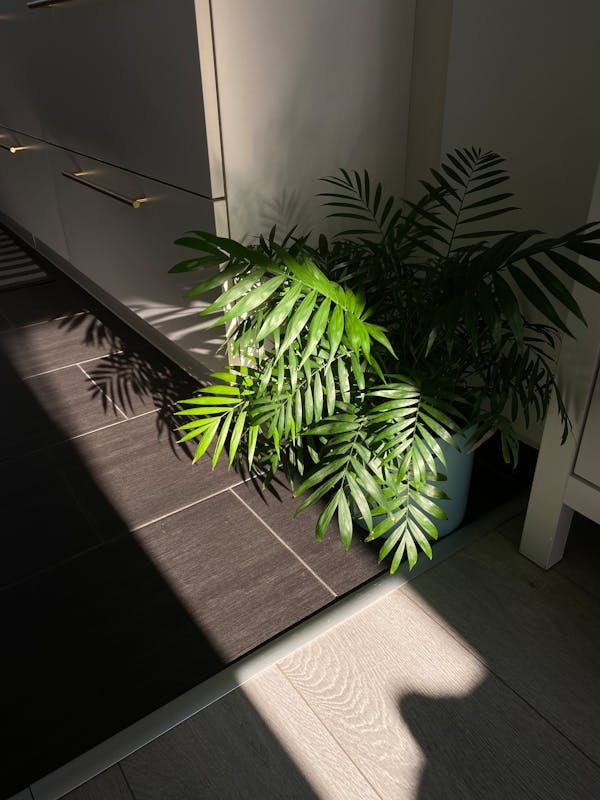
The Bamboo Palm is a lush, tropical indoor plant that adds a touch of greenery to your home while purifying the air. It’s particularly effective at removing formaldehyde, benzene, and trichloroethylene, making it a great choice among indoor plants for improving air quality in homes and offices alike.
Benefits of Bamboo Palm for Air Quality
Bamboo Palms are excellent indoor plants for filtering out harmful toxins from the air, including those emitted by synthetic building materials and household products. Their tall, graceful fronds not only improve the aesthetic appeal of your home but also enhance air circulation and humidity levels, making your indoor environment healthier and more comfortable.
Care Requirements for Bamboo Palms Indoors
Bamboo Palms are relatively easy indoor plants to care for, requiring moderate watering and indirect sunlight. They prefer consistently moist soil but should never be waterlogged, as this can lead to root rot. Placing them in a spot with bright, indirect light will help them thrive, but they can also tolerate lower light conditions, making them versatile indoor plants for different areas of your home.
Best Spots in the Home for Bamboo Palm
Bamboo Palms thrive in bright, indirect light, making them ideal indoor plants for rooms with plenty of natural light but no direct sunlight. They can also tolerate low-light conditions, though their growth may slow down. Consider placing Bamboo Palms in living rooms, offices, or entryways where they can make a statement while purifying the air. Avoid placing them near drafty windows or doors, as they prefer stable temperatures.
7. Rubber Plant (Ficus elastica)
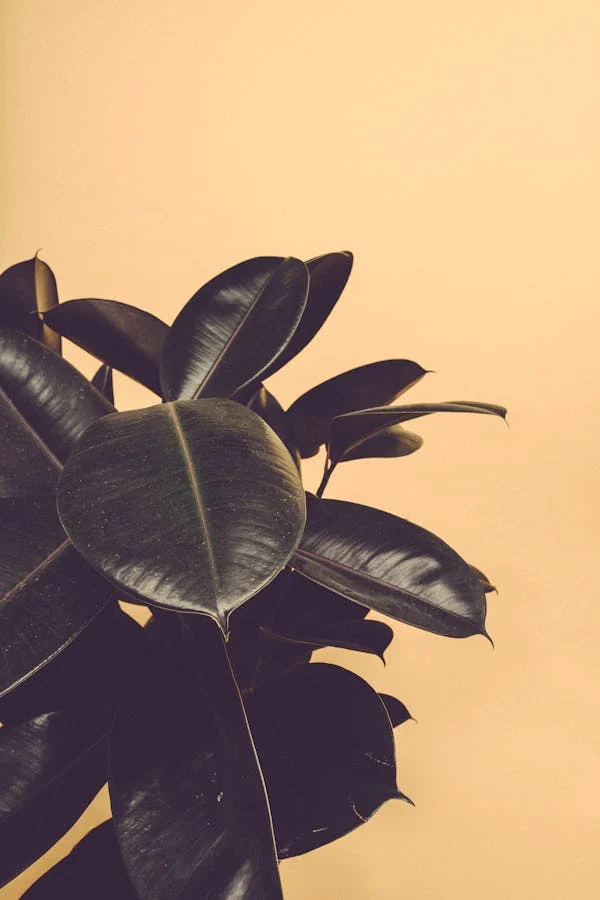
The Rubber Plant is a robust and attractive indoor plant known for its large, glossy leaves and air-purifying abilities. It’s particularly effective at removing formaldehyde from the air, making it a valuable addition to any home looking to improve indoor air quality with the help of indoor plants.
Why Rubber Plant is Effective at Filtering Air
Rubber Plants are powerful air-purifying indoor plants, particularly effective at absorbing formaldehyde, a common indoor pollutant. Their large leaves act as natural filters, trapping toxins and converting them into oxygen. In addition to improving air quality, Rubber Plants add a bold, tropical feel to your home, making them both functional and decorative indoor plants.
Caring for a Rubber Plant Indoors
Rubber Plants thrive in bright, indirect light but can also tolerate low-light conditions. They prefer well-drained soil and should be watered when the top inch of soil feels dry. Overwatering can lead to root rot, so it’s important to let the soil dry out between waterings. Regularly wiping the leaves with a damp cloth helps keep them clean and allows the indoor plant to absorb light more effectively.
Common Problems and How to Avoid Them
Rubber Plants are generally low-maintenance indoor plants, but they can suffer from common issues like leaf drop, yellowing leaves, and root rot. These problems are often caused by overwatering, insufficient light, or sudden temperature changes. To avoid these issues, ensure your Rubber Plant is placed in a stable environment with consistent light and watering practices. If leaf drop occurs, check for drafts or changes in light exposure and adjust accordingly.
FAQs
Q: How often should I water indoor plants for air purification?
A: The watering frequency depends on the indoor plant type. Most indoor plants for air purification require watering once the top inch of soil feels dry. However, indoor plants like Aloe Vera and Snake Plant need less frequent watering, while Boston Ferns need consistent moisture. Always adjust watering based on the specific needs of each indoor plant.
Q: Can these indoor plants survive in low-light conditions?
A: Yes, many of the indoor plants mentioned, such as the Snake Plant, Peace Lily, and Rubber Plant, can tolerate low-light conditions. However, they may grow slower and require less water in such environments. It’s best to place them in bright, indirect light for optimal growth of these indoor plants.
Q: Do I need to fertilize these indoor plants?
A: Fertilizing is important to keep your indoor plants healthy. A balanced, water-soluble fertilizer applied every 4-6 weeks during the growing season (spring and summer) is usually sufficient. During fall and winter, reduce or stop fertilization as most indoor plants enter a period of dormancy.

